Home Tags Posts tagged with "ipad"
ipad
Dozens of American Airlines planes have been grounded by a faulty iPad application.
The glitch caused iPad software – used by the planes’ pilots and co-pilots for viewing flight plans – to stop working.
AA’s cockpits went “paperless” in 2013 to save its staff having to lug heavy paperwork on board. The company estimated the move would save it more than $1.2 million in fuel every year.
American Airlines said that it had now found a fix for the problem.
A spokesman for the carrier said: “We experienced technical issues with an application installed on some pilot iPads.”
“This issue was with the third-party application, not the iPad, and caused some departure delays last night and this morning.
“Our pilots have been able to address the issue by downloading the application again at the gate prior to take-off and, as a back-up, are able to rely on paper charts they can obtain at the airport.
“We apologize for the inconvenience to our customers.”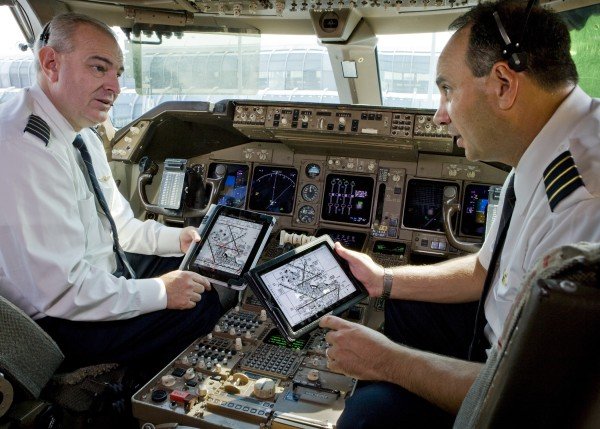
AA pilots use an app called FliteDeck, which is made by the Boeing subsidiary Jeppesen.
A spokesman for Jeppesen provided further detail.
“The issue was caused by a duplicate chart for Reagan National Airport in American’s chart database,” said Mike Pound.
“The app could not reconcile the duplicate, causing it to shut down.
“We were able to remedy the situation quickly, and instruct pilots to uninstall and reinstall the app.
“Until the chart database is updated, AA pilots flying to or from National will use PDF [portable document format] images of the chart, outside of the app.”
American Airlines is not the only carrier whose pilots and cabin crew have switched from using physical charts and paper manuals to tablets.
United Airlines was also an early adopter of iPads, while Delta has opted for Microsoft’s Surface tablets instead.
British Airways and Ryanair are among others still in the process of shifting to so-called Electronic Flight Bag-based systems.
In addition to saving on fuel costs, it is also suggested that such kit reduces flight preparation time, reduces the likelihood of injuries and helps staff by offering real-time updates.
Apple users have taken to social media to express their frustration over installing the company’s latest software update, iOS 8.
Many iPhone and iPad users have resorted to deleting photos, videos and other files in order to free up space for the new version of Apple’s mobile operating system, iOS 8, which requires up to 5.8GB of storage.
Apple has also removed apps for its new health software because of a bug.
One expert said Apple’s updates were often prone to “teething problems”.
Some vexed Apple users took to Twitter to express their annoyance.
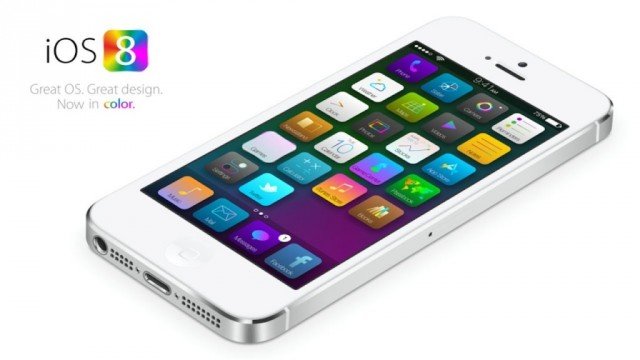
Apple users have taken to social media to express their frustration over installing the latest update iOS 8 (photo Apple)
This is not the first time Apple users have had trouble with iOS updates.
In 2012, the iOS 6 update caused some users to lose their apps, and others lost photos and messages when updating to iOS 7 in 2013.
As well as requiring a lot of storage, the latest version, iOS 8, does not include apps that run with Apple’s new HealthKit service, which is designed to work with third-party wearable health devices.
The software was originally scheduled for release in iOS 8, but has been pulled while Apple works on fixing a bug.
Apple users can avoid the need to free up storage space for the latest update by upgrading their software via iTunes on a Mac or PC, instead of through the phone or tablet itself.
Additionally, much of the free space required by the update is made available again once the installation process has completed.
[youtube ES0ZjnCUjlY 650]
Samsung must pay $290 million to Apple for copying iPhone and iPad features in its devices, a Silicon Valley jury has ruled.
This verdict comes after a previous jury found Samsung owed Apple $1.05 billion for copyright infringement.
However, District Judge Lucy Koh ordered a new trial because she said that jury miscalculated the amount Samsung must pay.
Samsung is expected to appeal.
The jury’s ruling covers 13 of the 26 Samsung devices that Apple had argued copied its technology. These are mostly older Samsung tablets and smartphones.
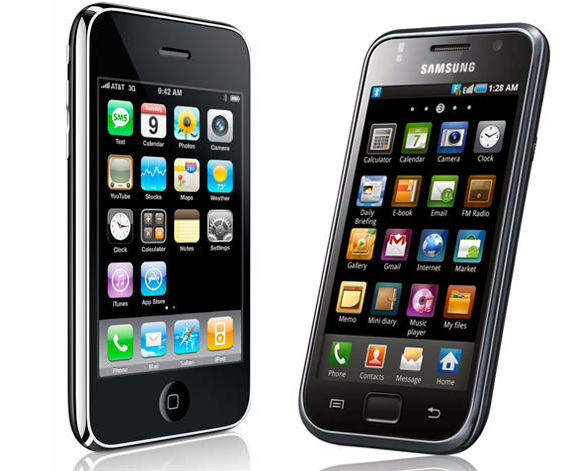
Samsung must pay $290 million to Apple for copying iPhone and iPad features in its devices
The $290 million figure comes on top of the $550 million Samsung owes Apple as a result of the initial verdict. In total, Apple has now been awarded close to $930 million in the case.
Apple shares traded slightly higher on the news. Samsung closed down slightly earlier in the day.
Samsung had argued that Apple should not have ownership over technology like what Samsung said was the “basic rectangle” shape of smartphones.
The jury in the courtroom – which is located just 15 minutes away from Apple’s headquarters in California – thought otherwise, awarding close to the $380 million Apple sought. Samsung said it owed just $52 million.
Samsung was found to have infringed Apple patents, including one that allows users to “pinch and zoom” on smartphone and tablet screens.
A separate trial to determine whether or not current Samsung devices violate Apple’s patents is scheduled for March 2014.
Apple has also asked Judge Koh to consider a sales ban against all of the older Samsung models that used Apple’s technology.
While Judge Koh has previously refused to issue such an injunction, a separate US Appeals Court asked her to reconsider this week.
Apple has unveiled the iPad Air, a top-of-the-range tablet that is 20% thinner than the previous version.
The 9.7in computer is 0.3in thick and weighs 1lb, which Apple claims is the lightest full-sized tablet on the market.
iPad Air is powered by the same A7 chip found in Apple’s iPhone 5S.
The launch comes at a time when some analysts have suggested that Google’s Android is about to overtake Apple’s iOS as the bestselling tablet platform.
Apple also announced a new version of its iPad Mini.
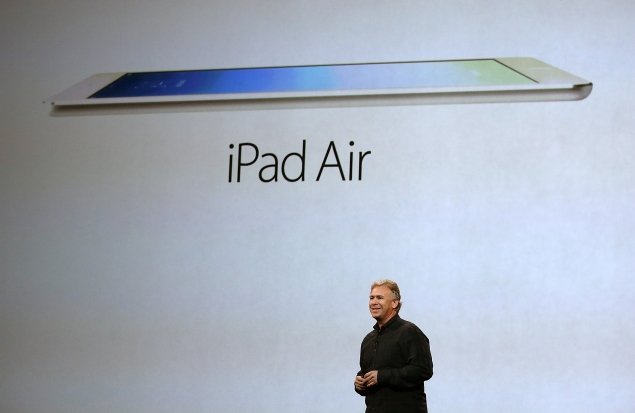
Apple has unveiled the iPad Air that is 20 percent thinner than the previous version
iPad Mini’s 7.9in screen has been upgraded to feature 2048 by 1536 pixels – the same as the larger model. It is being branded as “retina” to highlight the increased resolution.
Apple also announced that the latest version of its Mac operating system, Mavericks, would be offered at no cost to owners of computers already running any version of OS X released since 2009. It is the first time the company has not charged for a major Mac OS upgrade.
By contrast the full version of Windows 8.1 is sold for about $150, although it is free to existing Windows 8 users.
Linux-based Ubuntu has always been offered without charge. Chromebook computers also get free upgrades for Google’s PC operating system.
New laptops, productivity and leisure apps were also unveiled. However, Apple did not show off a new TV set-top box as some had speculated.
[youtube SZFYmVHZ4QM 650]
[youtube DO5CavHKkgI 650]
Walmart has announced that it has slashed the price of the 16 gigabyte iPhone 5 to $98, down from its previous offer of $129.
The offer means it is selling it can less than half the usual $200 price tag of the iPhone 5. To get the discount, customers will however need to sign a new two-year contract with AT&T, Verizon or Sprint.
Walmart also has fresh offers on 10-inch iPads with $50 off its previous price. The latest iPad with Retina Display now costs $449 and the price of the iPad 2 is $349.
However, the iPad mini did not get a discount and costs $330.
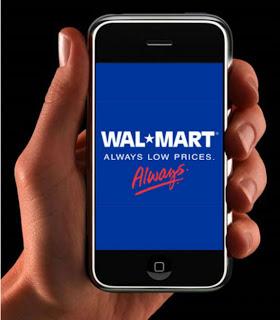
Walmart has announced that it has slashed the price of the 16 gigabyte iPhone 5 to $98, down from its previous offer of $129
Apple typically announces new products during the second week of September and is widely expected to unveil new versions of the iPhone and iPad on Sept. 10
Walmart isn’t the only retailers slash prices to clear out inventory ahead of the anticipated new product launches.
RadioShack is currently offering a $50 discount on all iPhones, including the iPhone 4S and iPhone 4, and customers don’t need to sign a new contract to get the price-cut.
T-Mobile is offering the iPhone 5 for $149 with a new two-year payment plan.
Best Buy is offering $100 off the iPhone 5, but customers need to trade in their old iPhone to get the deal.
Walmart’s deal undercuts all of them. The retailer has also cut the price of the iPhone 4S to $39, down from $89. Typically the iPhone 4S sells for $100 with a new contract.
Apple has reported its first quarterly drop in profits in a decade, but said it will raise dividends for shareholders.
Apple made a net profit of $9.5 billion in the first quarter of 2013, down from $11.6 billion last year.
However, the results were better than many had expected, as strong iPhone and iPad sales boosted revenues to $43.6 billion.
Concerns over slowing demand for Apple products amid increased competition have hurt its share price recently.
“Though we’ve achieved a credible scale and financial success, we acknowledge that our growth rate has slowed and our margins have decreased from the exceptionally high level we experienced in 2012,” Tim Cook, Apple CEO, said.
Apple said it sold 37.4 million iPhones and 19.5 million iPads worldwide in Q1 2013.
Although Apple continues to remain a dominant player in the tablet computer and smartphone markets, investors have been worried that its market share was being eroded by increasingly popular offerings from rivals such as Samsung.
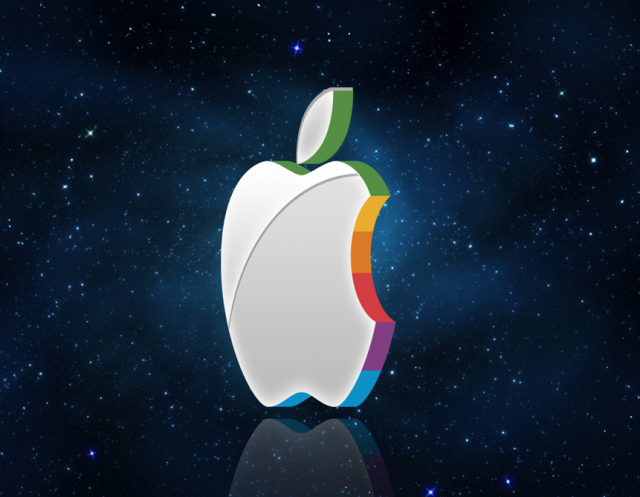
Apple has reported its first quarterly drop in profits in a decade, but said it will raise dividends for shareholders
There have also been concerns over the lack of new product launches.
Analysts have suggested the company needs to innovate and develop new products to stay ahead of the competition, rather than relying on updates to existing products.
“The market is tired of the same old thing at Apple,” said Lauren Balter, an analyst at Oracle Investment Research.
“Investors are looking for innovation. The reality is that people are looking at other products now and they are looking at other cool features from competitors.”
These concerns have seen investors ditch Apple shares over the past few months. It has lost around 40% of its stock market value since hitting an all-time high in September last year.
However, Tim Cook tried to assure investors and shareholders that the firm was continuing to take measures to ensure that it maintained its dominance in the market.
“The decline in Apple’s stock price over the last couple of quarters has been very frustrating for all of us… but we’ll continue to do what we do best,” he said.
“The most important objective for Apple will always be creating innovative products.
“Our teams are hard at work on some amazing new hardware, software and services, and we are very excited about the products in our pipeline,” he added.
Some analysts said that the lack of a new product did not mean that Apple was not developing one.
“What no investor can see is what is happening between closed doors in research and development,” said David Tan, assistant professor of strategy at Georgetown University.
“[Research and development] is always very secretive. It always takes a very long time between the inception of an idea and commercializing a product.”
Apple, which before the latest earnings had $137 billion in cash, has been under pressure to share some of it with shareholders.
On Tuesday Apple said it planned to buy back $60 billion in shares, and raise its dividend to shareholders by 15%.
The move encouraged investors and Apple’s shares rose 5.5% in after-hours trading on Wall Street.
[youtube SvXmVj4iEX8]
Apple shares dropped below the $400 mark for the first time since December 2011 amid concerns over slowing sales.
Apple shares fell as low as $398.11 in Wednesday trading, before ending the day down 5.5% at $402.80.
The concerns were triggered after one of its suppliers, Cirrus Logic, which makes sound components for the iPhone and iPad, reported a decline in sales.
With Apple due to release its latest quarterly results next week, some fear the numbers may be underwhelming.
According to various estimates, demand from Apple accounts for nearly 90% of Cirrus’s revenue.

Apple shares dropped below the $400 mark for the first time since December 2011 amid concerns over slowing sales
Michael Yoshikami, a portfolio manager at Destination Wealth Management, said that Cirrus’s warning makes it more likely that “Apple’s not going to surprise on upside”.
Apple, which enjoyed tremendous success in recent years, has been facing increasing pressure lately, both from rivals as well as investors.
While the sales of its popular iPhone and iPad have grown – they have fallen short of market expectations – and its market share has been declining.
At the same time, Apple’s biggest rival Samsung has been steadily increasing its market share, both in the smartphone and tablet PC sectors.
According to research by Gartner, in the final quarter of 2012 Samsung sold 64.5 million smartphones to Apple’s 43.5 million.
Samsung also doubled its share of the tablet PC market to 15.1% in the last three months of 2012, while Apple saw its share slide to 43.6% from 51.7%, despite seeing a jump in sales, data released by IDC earlier this year showed.
At the same time, some analysts have also been disappointed over the delay in launch of new products by the company.
There are rumors that the release of the company’s next iPhone may not be until September, rather than in June as had been earlier expected.
To add to its woes, a brand survey released by consultancy Added Value in March showed that Apple is perceived as less “inspiring” than it was three years ago.
Meanwhile, Samsung is now seen as equally inspiring in the US.
That has led many investors to fear that Apple may be losing its dominance and as a result its revenues and profits may be hurt.
All these concerns have seen investors ditch Apple’s stock. Its shares have fallen more than 40% since hitting their peak in September 2012.
[youtube 9-r88MXCZVU]
Suzanne Nassie from Massachusetts says that an iPad she bought at Walmart turned out to be only a piece of plastic painted to look like a real tablet.
Suzanne Nassie said she knew there was a problem the second she opened the shrink wrapped package.
The fake so confusing the store even refused her a refund at first before finally relenting.
“This isn’t even a real device,” Suzanne Nassie said upon discovering the trick.
“Somebody put a phony device in that box.”
There was no cord, and no way to turn the device on.
Suzanne Nassie brought it back to the store, but wasn’t allowed to speak to a manager and was refused a refund even though she brought the $499 receipt printed out just 20 minutes prior.
Instead Walmart employees told her to contact Apple.
By then she’d found even more problems.

Suzanne Nassie from Massachusetts says that an iPad she bought at Walmart turned out to be only a piece of plastic painted to look like a real tablet
“There’s a speaker that’s suppose to be on the back, it’s just little painted dots,” Suzanne Nassie told CBS Boston.
“When I peered inside at the port on the back where you’re suppose to charge it, it’s just plastic. No metal prongs or anything of that nature.”
Suzanne Nassie isn’t the first Walmart customer to get burned on an iPad.
People have reported buying fake devices at stores in New Jersey, Florida, and Texas.
This November, Florida man Emilio Pereda told reporters he purchased a fake iPad from the retail giant for $500.
“There were no red flags,” Emilio Pereda said.
“It was completely wrapped with this wrapper from Walmart with your sku number that matches the receipt.”
Suzanne Nassie has since been contacted by the store manager who apologized then offered a full refund.
“It’s frustrating that someone would try to take advantage of others for their own gain. We have apologized to our customer and offered her a full refund,” a Walmart spokesperson said.
“We’re still working to understand how this could have happened and are actively reviewing our transactional records and surveillance video to determine how this product ended up on our shelves. If a customer is purchasing an iPad at this store, they are welcome to open the product to confirm the right product is in the box after making the purchase.”
[youtube CItVHPUbIE4]
Tech giant Apple has lost its crown as the world’s most valuable publicly traded company after its shares continued to fall.
Oil company Exxon Mobil has regained the top slot after Apple shares fell 2.4%, following a 12% drop on Thursday.
Apple, which posted disappointing iPhone sales figures on Wednesday, has seen its shares fall 37% since their record high last September.
Exxon became number one in 2005, traded places with Apple during 2011, and had been number two since early 2012.
At the close on Wall Street, Apple had a market value of $413 billion, against Exxon’s of $418 billion.
Apple has been hit by fears over its future growth, despite record profits.
Although the firm said on Wednesday that it had sold more iPhones (47.8 million) and iPads (22.9 million) in the final three months of last year than in any previous quarter, investors and analysts had expected yet more.
On Thursday, about $50 billion was wiped off Apple’s value after the biggest daily drop in the firm’s stock in four years.

Exxon Mobil has regained the crown as world’s most valuable publicly traded company after Apple shares continued to fall
Apple is also facing fierce competition from rivals like Samsung, which accounted for one in four of all mobile phones shipped worldwide last year, according to Strategy Analytics.
Apple’s share price rose sharply following a revival under Steve Jobs, who died in 2011, which came about first in computers and then the iPod music player, and was then followed by the iPhone and iPad.
Apple’s shares were worth as little as $3.19 in 1997 when it faced the possibility of bankruptcy, and reached a record $702.1 on September 19.
[youtube HV4gXi9ej7Y]
Although the iPad Mini is still fresh off the Apple’s table and yet reports of a new generation iPad are already circulating on Japanese tech blog Macotakara.
Rumor has it Apple plans to launch a fifth generation tablet in March 2013, in keeping with its yearly Spring releases of previous models.
But with the recent debut in November of the Mini, another model so soon is unexpected and will have technology fans wondering what new features it could possibly offer.
According to Macotakara‘s inside source the new iPad, will look like the iPad Mini in design and detail and the dimensions of a slightly smaller iPad 2.
Deciphering the claim that “the expectation [of the new iPad] comes to have a small 4mm in height, 17mm in width, depth 2mm”, would point to a reduction in size of the original iPad by these dimensions suggests 9to5mac.com.
The current iPad measures 9.50 in (241.2 mm) by 7.31in (185.7 mm) by 0.37 in (9.4 mm) and so according to the reports, the new one would be almost as thin as the iPad Mini at around 0.3 in (7 mm).

Although the iPad Mini is still fresh off the Apple’s table and yet reports of a new generation iPad are already circulating on Japanese tech blog Macotakara
There are currently three models of iPad and five generations.
The first iPad, the iPad 2 and the iPad Retina display all measure the same. Apple released a faster version of the iPad Retina (also known to many as the iPad 3) this past March and some people refer to this as the iPad 4.
Following hot on the heels of the iPad 4 launch was the introduction of the Mini measuring a sleek 7.87 in (200 mm) in height, 5.3 in (134.7 mm) in width and 0.28 in (7.2 mm) in depth.
And blogs are also whispering about plans for a new iPad Mini already in the works.
The new model, according to Macotakara, would feature the Retina display with the same resolution as the third and fourth generation iPads.
These theories have been backed up by Digitimes and come from a source known for its accuracy regarding insider information about Apple products.
If they do prove to be true, it would suggest that Apple is stepping up its game and keeping ahead of the curve within the world of tablets.
Apple’s new iPad Mini has gone on sale around the world.
While a few diehard fans queued for hours to be among the first to own the new smaller iPad, queues were tiny compared to previous launches.
In Hong Kong, reports even claim that staff outnumbered the customers when the store opened.
Experts say bad weather, Hurricane Sandy and increased competition from rivals such as Google, Amazon and Microsoft could be behind to lack of queues.
Experts believe the effects of Hurricane Sandy and the large number of online orders mean the queues were smaller.
Apple fans lined up in several Asian cities to get their hands on the iPad Mini on Friday, but the device, priced above rival gadgets from Google and Amazon.com, attracted smaller crowds than at the company’s previous global rollouts.
Apple Inc’s global gadget rollouts are typically high-energy affairs drawing droves of buyers who stand in line for hours.
But a proliferation of comparable rival devices may have sapped some interest.
About 50 people waited for the Apple store in Sydney, Australia, to open, where in the past the line had stretched for several blocks when the company debuted new iPhones.
At the head of Friday’s line was Patrick Li, who had been waiting since 4:30 a.m. and was keen to get his hands on the 7.9-inch slate.
“It’s light, easy to handle, and I’ll use it to read books. It’s better than the original iPad,” Patrick Li said.
There were queues of 100 or more outside Apple stores in Tokyo and Seoul when the device went on sale, but when the company’s flagship Hong Kong store opened staff appeared to outnumber those waiting in line.
The iPad Mini marks Apple’s first foray into the smaller-tablet segment, and the latest salvo in a global mobile-device war that has engulfed combatants from Internet search leader Google Inc to Web retailer Amazon.com Inc and software giant Microsoft Corp.

Apple’s new iPad Mini has gone on sale around the world
Microsoft’s 10-inch Surface tablet, powered by the just-launched Windows 8 software, went on sale in October, while Google and Amazon now dominate sales of smaller, 7-inch multimedia tablets.
Unveiled last week, the iPad Mini has won mostly positive reviews, with criticism centring on a screen considered inferior to rivals’ and a lofty price tag.
The new tablet essentially replicates most of the features of its full-sized sibling, but in a smaller package.
“Well, first of all it’s so thin and light and very cute – so cute!” said iPad Mini customer Ten Ebihara at the Apple store in Tokyo’s upscale Ginza district.
Also on Friday, Apple rolled out its fourth-generation iPad, with the same 9.7-inch display as the previous version but with a faster A6X processor and better Wi-Fi. Both devices were going on sale in more than 30 countries.
Apple will likely sell between 1 million and 1.5 million iPad Minis in the first weekend, far short of the 3 million third-generation iPads sold last March in their first weekend, according to Piper Jaffray analyst Gene Munster.
“The reason we expect fewer iPad Minis compared to the 3rd Gen is because of the lack of the wireless option and newness of the smaller form factor for consumers,” Gene Munster said in a note to clients.
“We believe that over time that will change.”
Reviewers have applauded Apple for squeezing most of the iPad’s features into a smaller package that can be comfortably manipulated with one hand.
James Vohradsky, a 20 year-old student who previously queued for 17 hours at the Sydney store to buy the iPhone 5, only stood in line for an hour and a half this time.
“I had an iPad 1 before, I kind of miss it because I sold it about a year ago.
“It’s just more practical to have the mini because I found it a bit too big. The image is really good and it’s got the fast A5 chip too,” James Vohradsky said.
The iPad was launched in 2010 by late Apple boss Steve Jobs and since then it has taken a big chunk out of PC sales, upending the industry and reinventing mobile computing with its apps-based ecosystem.
A smaller tablet is the first device to be added to Apple’s compact portfolio under Cook, who took over from Steve Jobs just before his death a year ago. Analysts credit Google and Amazon for influencing the decision.
Some investors worry that Apple might have lost its chief visionary with Steve Jobs, and that new management might not be able to stay ahead of the pack as rivals innovate and encroach on its market share.
There were queues of 100 or more outside Apple stores in Tokyo and Seoul when the device went on sale, but when the company’s flagship Hong Kong store opened staff appeared to outnumber those waiting in line.
[youtube 3sh9e7pjUmI]
Apple fans are looking forwards with keen anticipation to the expected launch of the iPhone 5 tonight.
But it is possible Apple might surprise us “one last thing” by the end of tonight’s presentation – an iPad Mini, a shrunken-down, pocket-friendly of the iconic tablet which ushered in the post-PC era.
Now, a leak from Chinese website shows us the potential size of Apple’s new range and – even if all we are looking at is cases – is the first image to show us how an enthusiast’s collection will stack up.
If the Apple Mini does not arrive tonight, a number of leaks and images of prototypes imply the device will be on shelves before Christmas.

Leaked images claim to show how the new iPhone, iPad Mini, and iPad stack up against each other
These images appeared on a Chinese supplier’s website, before being spotted by French website nowhereelse.fr.
Nowhereelse said the images conform to previous leaks about the iPad Mini, and their own mocked-up iPad Mini, based on specifications revealed over the last few months, matched these covers “perfectly”.
The blog website added: “In addition, the location of the holes cut into multiple accessory supposedly designed to protect the iPad Mini correspond perfectly with the positioning of components.”
The Apple Mini is believed to sport an eight-inch screen, making it a shrunken version of the iPad’s ten-inches.
This will allow a higher degree of portability over previous models, and also give Apple the ammunition to compete with Google, which recently brought out a seven-inch range of Nexus tablets.
It is also believed to be a 3G-capable model, meaning you can use data on the go.
While Steve Jobs was famously against smaller iPads, the success of the Nexus and Amazon’s Fire of budget tablets appears to have convinced Apple there is a market for the slim-line device.
Rumors from Apple suppliers suggest the innards of the Mini will be equivalent to an iPad 2, which analysts suggest will be more than enough to power the shrunken device.
The third iPad had a specification increase but also increased slightly in weight due to the demands of the high-definition Retina display.
Apple is believed to be launching an iPad Mini in October, and now fansite Apple.pro claims to have photographed the eight-inch evolution of the iPad.
Apple is notoriously secretive on the run-up to new launches, but leaks from within the industry, including from suppliers and partners, have all but confirmed the device is on its way this Autumn.
The Apple Mini is believed to sport an eight-inch screen, making it a shrunken version of the iPad’s ten-inches.
This will allow a higher degree of portability over previous models, and also give Apple the ammunition to compete with Google, which recently brought out a seven-inch range of Nexus tablets.

Fansite Apple.pro claims to have photographed the eight-inch evolution of the iPad
Apple.Pro also reports this is a 3G-capable model, meaning you can use data on the go.
While Steve Jobs was famously against smaller iPads, the success of the Nexus and Amazon’s “Fire” of budget tablets appears to have convinced Apple there is a market for the slim-line device.
Rumors from Apple suppliers suggest the innards of the Mini will be equivalent to an iPad 2, which analysts suggest will be more than enough to power the shrunken device.
The third iPad had a specification increase but also increased slightly in weight due to the demands of the high-definition Retina display.
Apple is also believed to be announcing the iPhone 5 during September, although it has not yet confirmed a launch date.
The new device which is expected to boast a display of less than eight inches will be unveiled at a separate event, so as not to dilute the impact of the iPhone’s launch, according to analysts.
“I don’t think Apple would want reviews of both a new iPhone and new-size iPad appearing at the same time,” said Daring Fireball’s John Gruber.
“Why share the spotlight? Why have another Apple product battling with the iPhone for the top spots in news coverage?
“The more I think about it, the less sense it makes for the iPhone to even share the stage at the announcement with any other product.
“The iPhone is too big, too cool and garners too much attention – and it’s in Apple’s interest to keep that attention undiluted.”
A South Korean court has ruled that tech giants Apple and Samsung both infringed each other’s patents on mobile devices.
The court imposed a limited ban on national sales of products by both companies covered by the ruling.
It ruled that Apple had infringed two patents held by Samsung, while Samsung had violated one of Apple’s patents.
The decision comes as a jury in California is deliberating on a patent trial between the two firms in the US.

A South Korean court has ruled that tech giants Apple and Samsung both infringed each other's patents on mobile devices
The sales ban will apply to Apple’s iPhone 3GS, iPhone 4 and its tablets the iPad and iPad 2.
Samsung products affected by the ban include its smartphone models Galaxy SI and SII and its Galaxy Tab and the Galaxy Tab 10.1 tablet PCs.
The court ordered Apple to pay 40 million won ($35,000) in damages to its South Korean rival, while Samsung was told to pay Apple 25 million won.
The awards are dwarfed by the damages being sought by Apple in its case in California. It is seeking more than $2.5 billion from Samsung, for allegedly violating its patented designs and features in the iPad and iPhone.
A Samsung spokesperson said the court had found the South Korean firm guilty of violating Apple’s patent relating to the “bounce back” function.
The function lets users know that they have reached the end of a screen that they may be scrolling through on their devices.
Meanwhile, Apple has been found guilty of violating patents relating to telecom standards held by Samsung, including technology that makes the transfer and transmission of data between devices more efficient.
However, the court ruled against Apple’s claims that Samsung had copied the designs of its products.
“There are lots of external design similarities between the iPhone and Galaxy S, such as rounded corners and large screens… but these similarities had been documented in previous products,” a judge at the Seoul Central District Court was quoted as saying by the Reuters news agency.
“Given that it’s very limited to make big design changes in touchscreen based mobile products in general… and the defendant [Samsung] differentiated its products with three buttons in the front and adopted different designs in camera and [on the] side, the two products have a different look,” the judge said.
The first pictures of the flex cable components for Apple’s iPad Mini and iPhone 5 incorporating the new smaller dock connector have emerged.
The photograph, shared by French tech website nowhereelse.fr, shows two components, one of which is said to be similar to another apparently leaked picture of a part of the new iPhone.
As well as the new dock connector, the part also seems to take in the headphone jack and the home button connector for the hotly awaited devices.
In an attempt to ascertain the credibility of the leak, the French website asked Kyle Wiens of iFixit to give his opinion on the picture’s authenticity.
He confirmed that the component is indeed consistent with other Apple parts, but added that he wasn’t 100% certain that it was authentic.

The first pictures of the flex cable components for Apple's iPad Mini and iPhone 5 incorporating the new smaller dock connector have emerged
One detail that has troubled Apple observers is that the headphone jack on the pictured component is located directly next to the dock connector.
Macrumours.com points out that so far case leaks, design drawings and physical mockups of Apple’s forthcoming devices have all so far suggested the headphone jack on the iPad Mini will by found along the top edge – as it is on the full-size iPad.
There was a public outcry when it was revealed that the next iPhone would get a new docking port connector.
The newer, slimline port means that thousands of current Apple accessories will need a potentially clunky adapter to work with the “iPhone 5” – or their devices will become unusable.
Leaks from the website iMore, which has strong sources “close to Apple”, earlier this month suggested the entire next generation of iDevices, including the iPod Nano, iPod Touch, iPad Mini and future versions of the iPad, will use the new port.
The site believes a special connector will be released to connect older accessories – such as docking stations and speakers – to newer versions of the range.
Many fans were left angry after images allegedly showing the iPhone 5’s new design leaked out, showing the traditional 30-pin dock connector – used for charging, syncing files and pumping audio to hi-fis – had been re-designed into a smaller shape.
The new port looks similar to micro USB, the standard supported by all other phone manufacturers – however it is very unlikely that Apple will support this standard, despite moves by the EU to get all phone companies to rally around one type of cable.
Apple’s version has a triangle-shaped wedge at one end, which should stop users plugging in the cable the wrong way round.
Mac fans may spot a superficial similarity to a Firewire port, which is used to transfer raw video footage and larger files at high speed.
The new port means older accessories will be rendered redundant unless adapters are released to make them compatible again – which is likely to be an ungainly solution, and may be impossible for some docks.
The “nano-SIM” slot, containing the SIM card which connects a phone to the carrier network, has also been redesigned to be thinner, although this will be unlikely to cause much disruption to users as networks will provide replacements SIMs if necessary.
There are also rumors, reported on iMore, that the iPad 3, which was released in the Spring, will get a slight tweak this Autumn to brink the dock connector in-line with the rest of the range.
Samsung has released a new tablet, the Galaxy Note 10.1.
Samsung Galaxy Note 10.1 launch comes midway through a patent trial involving the South Korean firm and Apple, in which each company has accused the other of copying its technology.
The new Android tablet distinguishes itself from the iPad by featuring a stylus and a screen which can measure 24 levels of pressure sensitivity.
It also allows a split-screen mode in which two apps can be used at once.
In addition Samsung has opted to retain a look it introduced in 2011 placing wider bezels along two of the device’s sides. The feature was created after a German court temporarily banned earlier models for infringing Apple’s tablet design.
The significance of this is that Apple is seeking damages in the California trial claiming that its rival’s original Galaxy Tab computers were “confusingly” similar to its own.

Samsung Galaxy Note 10.1 launch comes midway through a patent trial involving the South Korean firm and Apple, in which each company has accused the other of copying its technology
Samsung rejects the accusation saying Apple’s US design patent showed “little more than a blank rectangle”, and it would go against legal precedent to allow it to monopolize the shape.
The judge overseeing the case has asked the chief executives of both firms to meet again to see if they can resolve the dispute without the need for a court ruling.
According to analysts at IHS iSuppli, Apple had a 69.6% share of the global tablet market in the April-to-June quarter, compared with Samsung’s 9.2% share.
The Asian tech firm began calling its witnesses at the trial in San Jose earlier this week after Apple rested its case.
Among them was Dr. Woodward Yang, an electrical engineering professor from Harvard University, who backed Samsung’s claim that Apple had infringed patents involving sending photos by email and playing music in the background.
Samsung also took evidence from Jeeyuen Wang, one of its designers, who rejected claims she had made reference to or copied the look of Apple’s iOS system app icons.
Apple’s lawyer then showed the court documents signed by Jeeyuen Wang which featured side-by-side comparisons of the two firms’ interfaces.
Samsung also presented video testimony from Rodger Fidler, a former employee at the Knight Ridder newspaper group, who developed a mock-up tablet for a concept video in 1994. He said he had shown the prototype to Apple.
The evidence is intended to suggest that Apple’s designs were not unique and therefore do not deserve patent status.
Earlier this year a court in the Netherlands rejected a claim that an early Galaxy Tab computer had infringed Apple’s design rights after hearing about the Knight Ridder effort.
Apple is claiming a total of $2.5 billion in damages claiming seven patent breaches in addition to other trade violations.
The judge could triple that figure if she decides to punish Samsung for willful misconduct.
For its part the South Korean company is demanding a “reasonable royalty rate” for five patents which it claims Apple has infringed.
Both sides are expected to present closing arguments next week.
However, Judge Lucy Koh has convinced the firms to make one last effort to resolve the lawsuit outside court.
“I see risk here for both sides if we go to a verdict,” the judge said according to a transcript provided by Forbes magazine.
“I think it’s worth one more attempt. If you could have your CEOs have one last conversation, I’d appreciate it.”
Lawyers for the companies said at the very least there would be a telephone conversation involving the businesses.
Google is unveiling an enhanced version of Voice Search to its iPhone app that could rival Apple’s inbuilt Siri software.
Google announced on Wednesday that the new features will be added to its iOS app on iPhone and iPad (iOS version 4.2+) within the next few days.
Voice Search on iOS will be able to find map information, weather results, and information on individual people and topics.
“Often the most natural way to ask a question is by asking aloud” said Amit Singhai, Senior Vice President of Google Search, on Google’s official blog.

Google is unveiling an enhanced version of Voice Search to its iPhone app that could rival Apple's inbuilt Siri software
“So we’ve combined our speech recognition expertise, understanding of language and the Knowledge Graph so that Voice Search can better interpret your questions and sometimes speak the answers back as full sentences.
“You just need to tap the microphone icon and ask your question, the same way you’d ask a friend. For example, ask <<What movies are playing this weekend?>> and you’ll see your words streamed back to you quickly as you speak.
“Then Google will show you a list of the latest movies in theaters near you, with schedules and even trailers. It works for everything from celebrity factoids to the height of Kilimanjaro and more. When Google can supply a direct answer to your question, you’ll get a spoken response too.
“These are baby steps, but important ones on our way to building the search engine of the future – one that is much more intelligent and useful than it was just a few years ago. It’s a very exciting time to be working in this field.”
Windows 8 will be released on October 26, Microsoft has revealed.
The declaration was made at the firm’s annual sales meeting and was published on its blog shortly after.
The firm has described the update as the most important redesign of its interface in more than a decade.
The announcement was made a day before the firm releases its fourth quarter earnings report. Analysts say it may post its first ever loss after writing down the value of a troubled takeover.
Microsoft paid $6.3 billion for the online advertising service Aquantive in 2007 but has said the service did not perform as expected. As a result its earnings will be offset by a $6.2 billion charge.
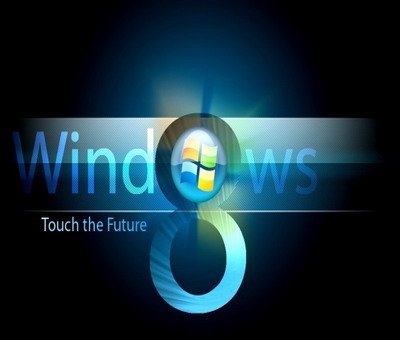
Windows 8 will be released on October 26
Microsoft’s future efforts are now focused on its upcoming system software release.
Windows 8 includes a touch-controlled interface dubbed Metro as well as a more traditional desktop.
It will be released in a version that runs on ARM-based chips for the first time, as well as versions for x86-based ones designed by Intel and AMD.
Some consumers will have delayed buying new computers ahead of the release, depressing Microsoft’s sales in the meantime.
However, many companies have continued with their roll-out of Windows 7 as it typically takes big firms’ IT departments months or years after a major system update to approve its installation on workers’ computers.
Part of Microsoft’s goal in the initial months will be to eat into sales of rivals’ tablet computers.
Apple’s iPad and Amazon’s Kindle Fire have dominated the sector while Google’s new Nexus 7 has also attracted positive reviews.
Microsoft hopes to make the most of the fact that it can offer a single system that can power both desktop PCs and mobile devices – allowing progams to work on both – as opposed to Apple’s decision to offer different Mac OS X and iPad iOS systems.
Microsoft has also taken the out-of-character step of announcing its own hardware – the Surface family of tablets – to compete with other companies’ products on the Windows 8 platform to maximize its chances.
But since announcing the news chief executive Steve Ballmer has sought to reassure his company’s hardware partners, describing Surface as “a design point” that would have a place within a “broad Windows ecosystem”.
Whatever the case, investors appear hopeful despite the problems with Aquantive.
“Microsoft’s stock is up 17% since the start of the year in part because of anticipation for Windows 8 and Surface,” said Colin Gillis, senior technology analyst at BGC Partners.
“We’re also still seeing nearly one million PCs sold worldwide a day so that’s a sizeable marketplace for them.”
Apple has been ordered by a UK judge to publish announcements that Samsung did not copy the design of its iPad, according to the Bloomberg news agency.
It said the judge said one notice should remain on Apple’s website for at least six months, while other adverts should be placed in various newspapers and magazines.
It follows Apple’s failed attempt to block sales of the South Korean firm’s Galaxy Tab tablets.

Apple has been ordered by a UK judge to publish announcements that Samsung did not copy the design of its iPad
Apple and Samsung have not commented.
The order did not feature in Judge Colin Birss’s judgement published on 9 July, but Bloomberg said the matter was discussed in the court following the verdict.
It said the notices must make reference to the court case and should be designed to “correct the damaging impression” that Samsung’s tablets had aped the look of Apple’s products.
“They do not have the same understated and extreme simplicity which is possessed by the Apple design,” said the judge at the time.
“They are not as cool. The overall impression produced is different.”
However, the judge refused Samsung’s request that Apple be forbidden from restating its claim that its design rights had been infringed.
Judge Birss said that the US firm was “entitled” to hold the opinion that his judgement was wrong.
Microsoft has unveiled a touch-ready version of Office, the latest version of the company’s market-leading productivity software suite.
In San Francisco, Steve Ballmer described Office 2013 as the firm’s “most ambitious release” to date.
The software is primed for mobile devices, cloud computing, and social networking.
Office is the globe’s most popular productivity application, with a billion users worldwide.
It is also Microsoft’s key revenue driver, and keeping it fresh is how the firm intends to maintain its market lead.
Throughout his hour-long demonstration on Monday, Steve Ballmer and Kirk Koenigsbauer, vice-president of Microsoft’s Office division, highlighted how the software had been adapted to keep pace with technology changes.
Microsoft Office 2013 is fully touch-ready, as is Windows 8, the company’s latest operating system, and its new tablet computer, Surface, which is expected to be available in October.
Surface will hit stores some two-and-a-half years after Apple launched its iPad onto the market, and analysts say the power of Office gives Microsoft its best chance at gaining a genuine foothold in the tablet market.
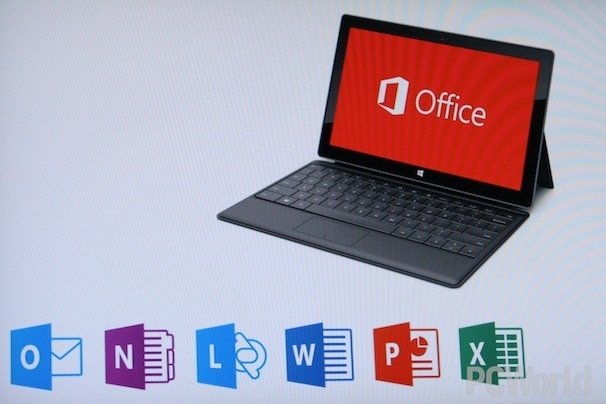
Steve Ballmer described Microsoft Office 2013 as the firm's "most ambitious release" to date
For the first time, Word, Excel, PowerPoint, and Outlook are all responsive to touch-screen controls – taps, swipes, and pinch-and-zoom can be used within documents, files and presentations.
The user-experience is designed to be more “immersive,” “visceral” and “multimedia-rich” compared to earlier version of Office, Steve Ballmer said.
• Documents, slides, and presentations can be marked up on mobile screens, drawn on, highlighted or annotated with a digital pen, stylus or even a finger.
• Skype, bought for $8.5 billion in 2011, and Yammer, a social network for businesses, are being rolled into Office: live, multi-party conversations and meetings can be created with Skype video and accessed within Word, PowerPoint, or Outlook.
• New “People Cards” include an individual’s digital “presence” – a photo, options to email, instant message, phone or video chat, and activity feeds from the social networks Facebook and Linkedin.
• Skydrive automatically saves and syncs all Office documents in an online, cloud-based storage service. This makes files and content created in Office available on demand across computing devices.
In 2011, Microsoft Office was worth $14 billion, more than half the company’s profits, according to Michael Silver, a research analyst at Gartner.
“There doesn’t seem to be a lot of competition here because Microsoft still has over 90% of the market,” said Michael Silver.
While less expensive and free online alternatives to Office like Google Apps and Zoho have become available, no company is taking away significant market share from Microsoft yet, he said.
“Microsoft has been competing against free for over 10 years with the open source products and in terms of cheap with Google.”
“But the compatibility issues… [have] been a bigger hurdle for people than a lot of people would have expected and it has kept the vast majority of users in the Microsoft camp,” Michael Silver noted.
Andy McLoughlin, co-founder of Huddle, a cloud computing start-up in San Francisco that competes with Microsoft’s Sharepoint software for online content management, sees Office as dominant in the workplace, but faltering elsewhere.
“Office is still seen as the de facto productivity suite for the workplace,” he agreed.
“I think it’s got a few years yet. Microsoft is still pretty clever in terms of the way that they license the software for big companies and so there’s a certain degree of lock-in.”
“When you talk about consumers, though, I don’t really know any people who, unless they have a license through work, would keep Office on their machine.
“Why spend several hundred dollars on software when you are really only using one or 2% of the functionality?”
A Russian hacker has discovered an easy way to get in-app purchases on the iPhone and iPad for free.
The process is potentially damaging for Apple’s iOS developers whose main revenue comes from the paid upgrades.
Users just have to download security certificates from the hacker’s website and change a setting on your device’s wi-fi connection.
The hacker, who calls himself ZonD80, also posted a video on YouTube announcing his method and explaining how to do it.
But the clip had been removed today and instead displayed a message saying it was no longer available “due to a copyright claim by Apple, Inc”.
According to the Huffington Post, the Apple blog 9to5Mac has confirmed that the hack does work on several of its devices which run systems iOS3 to the up-coming iOS6.
For the time being, Apple will have some respite as Zon80’s says his website will be unavailable for “two or three days” because his servers are down.
The hacker’s workaround comes days after it emerged that older versions of Apple’s operating system, OS X, was being attacked by Java-based malware.
Scientists at the University of South Carolina have developed a T-shirt capable to store electrical power.
The T-shirt could pave the way for clothes that are able to charge phones and other devices.
Experts predict that new technologies including roll-up smartphones and laptops will be on the market soon.
These developments would spur on the need for “flexible energy storage”, said the professor behind the project.
Xiaodong Li, a professor of mechanical engineering at the university teamed up with post-doctorate researcher Lihong Bao to find a solution.
The pair wrote up their findings for the Advanced Materials journal.
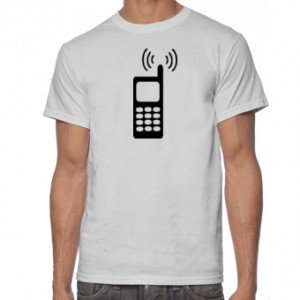
Scientists at the University of South Carolina have developed a T-shirt capable to store electrical power
They used a T-shirt bought from a local discount store, which was soaked in a solution of fluoride, dried and then baked in an oxygen-free environment at high temperature.
The fibres in the fabric converted from cellulose to activated carbon during the process, but the material remained flexible.
By using small parts of the fabric as an electrode, the researchers showed that the material could be made to act as a capacitor.
Capacitors store an electrical charge and are components of nearly every electronic device on the market.
By coating the individual fibres of the carbonized fabric with manganese oxide just a nanometre thick, the electrode performance of the fabric was further enhanced.
“This created a stable, high-performing supercapacitor,” said Prof. Xiaodong Li.
The hybrid supercapacitors proved resilient – even after thousands of charge-discharge cycles their performance did not diminish more than 5%, the researchers said.
“By stacking these supercapacitors up, we should be able to charge portable electronic devices such as cell phones,” Prof. Xiaodong Li added.
“We wear fabric every day. One day our cotton T-shirts could have more functions; for example, a flexible energy storage device that could charge your cell phone or your iPad.”
Apple has agreed to pay $60 million to Chinese firm Proview to settle a dispute involving rights to the “iPad” name, a court in China has said.
Proview had claimed that it owned the rights to the iPad name in the Chinese market after registering it in 2000.
However, Apple had insisted that it had acquired the worldwide rights for the name in 2009.
A court in Guangdong had asked the two firms to try to reach a settlement.
“The iPad dispute resolution is ended,” the Guangdong High People’s Court said in a statement.
“Apple Inc. has transferred $60 million to the account of the Guangdong High Court as requested in the mediation letter.”
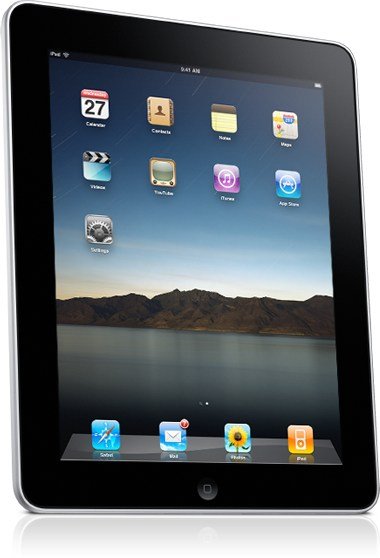
Apple has agreed to pay $60 million to Chinese firm Proview to settle a dispute involving rights to the "iPad" name
Apple had bought the global rights to the “iPad” from Proview’s Taiwanese affiliate for $55,000.
However, the Chinese firm had argued that its affiliate did not have the rights to sell the iPad name rights for China, which is one of the fastest-growing markets for Apple’s products.
The dispute between the two firms resulted in Apple’s iPads being pulled off the shelves in some parts of China.
Proview had even sought a ban on the sales of the product in Shanghai as part of the dispute, a move that was rejected by the courts.
After the court announced the settlement on Monday, Proview confirmed that the firm had agreed to the settlement.
“The case is settled, both sides are satisfied with the agreement,” said Ma Dongxiao, a lawyer from Shenzhen Grandall Law Firm, which is handling Proview’s case.
China is one of the biggest markets for Apple’s products and demand for its gadgets has been increasing steadily in the country.
However, it is starting to face increasing competition from rivals such as Samsung as they look to tap into the lucrative Chinese market.
Analysts said that one of the key reasons behind Apple agreeing to settle the naming dispute is that firm may not have wanted its sales in the country to be disrupted and as a result lose some of its market share to competitors.
“When Apple is on the receiving end of a litigation, especially in China, it is a sensible move for them to settle it and move on,” said Andrew Milroy of Frost & Sullivan.
“That would help minimize the disruption to the Apple juggernaut.”
The dispute between the two firms over the rights to “iPad” name was not limited to China.
Proview had also lodged a case against Apple in the US.
It had accused Apple of deceiving it into selling the rights to the name by setting up a company, IP Application Development Ltd (IPADL) in the UK.
It claimed that Apple said the trademark was “an abbreviation for the company name”.
However, that case was dismissed by the court earlier this year.
Analysts said that with the two firms agreeing to a settlement in China, it was unlikely that Proview would take any further action against Apple.
A US court has banned sales of Samsung’s Galaxy Tab 10.1 tablet in the country while it decides on the firm’s patent dispute with Apple.
Apple has claimed that Samsung infringed its design patent and copied the look of its popular device, the iPad.
Samsung Galaxy Tab 10.1 is considered by most analysts as the biggest rival to Apple’s iPad.
The trial for the case is scheduled to begin in California on 30 July.
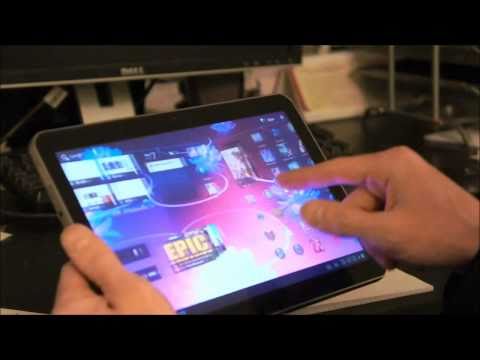
A US court has banned sales of Samsung's Galaxy Tab 10.1 tablet in the country while it decides on the firm's patent dispute with Apple
“Although Samsung has a right to compete, it does not have a right to compete unfairly, by flooding the market with infringing products,” said US District Judge Lucy Koh.
Samsung said in a statement that it “will take necessary legal steps” and that the ruling was unlikely to have a significant impact on its business.
Apple and Samsung are two of the biggest manufacturers of tablet PCs and smartphones.
The two rivals are involved in a variety of legal cases in various countries across the globe amid claims and counter claims of patent infringement.
While Apple had accused Samsung of copying its design and look, the South Korean firm has alleged that Apple infringed its patents relating to the way phones and tablet PCs connect to the internet.
However, this is the first time that either of the firms has been able to win an injunction banning sales of the rival’s product.
Analysts said the order passed by the judge was a significant development in the continuing legal battle between the two companies.
“The relief being given to Apple here is extraordinary,” said Colleen Chien, a professor at Santa Clara Law in Silicon Valley.
“Preliminary injunctions are rarely asked for and rarely granted.”
Chanel designer Karl Lagerfeld seems to be discovering his paternal side after welcoming Choupette the Siamese cat into his Paris home after he revealed last year that he could never imagine having children of his own.
Over the past few months Karl Lagerfeld, 78, has invested time teaching his female feline the art of fine dining and, gearing her up for the modern world, how to work an iPad.
The fashion mogul even congratulated Choupette on her progress by posting a Twitter picture of her busy playing on the Apple device.
“She has lunch and dinner with me on the table, with her own food. She doesn’t touch my food.
“She doesn’t want to eat on the floor. She sleeps under a pillow and she even knows how to use an iPad.” Karl Lagerfeld told WWD.
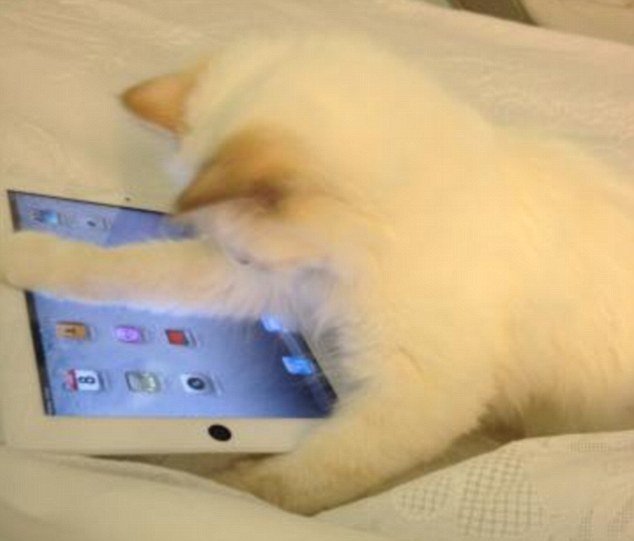
Karl Lagerfeld congratulated Choupette on her progress by posting a Twitter picture of her busy playing on the Apple device
And while he’s away on business Karl Lagerfeld revealed that he has recruited two personal maids to provide Choupette with round-the-clock care.
He added: “She is beyond spoiled.”
Choupette was given to Karl Lagerfeld by his French model muse Baptiste Giabiconi in January and she has since become his primary preoccupation.
He even gets his maids to keep a diary of her moods, movements and eating patterns if he’s not with her.
“In the nine months, we already have almost 600 pages… I think it could be funny to make a little book of Choupette’s diary.”
But we won’t be seeing Choupette fashioning custom-made Chanel wares anytime soon, as Karl Lagerfeld described the act of humanizing pets as “circuslike”.
Last year while sat with former Vogue Paris editor-in-chief Carine Roitfeld for Interview’s September issue, Karl Lagerfeld said: “If I were a woman, I would love to have lots of kids. But for men, I don’t believe in it.”
12Next  Page 1 of 2
Page 1 of 2
























